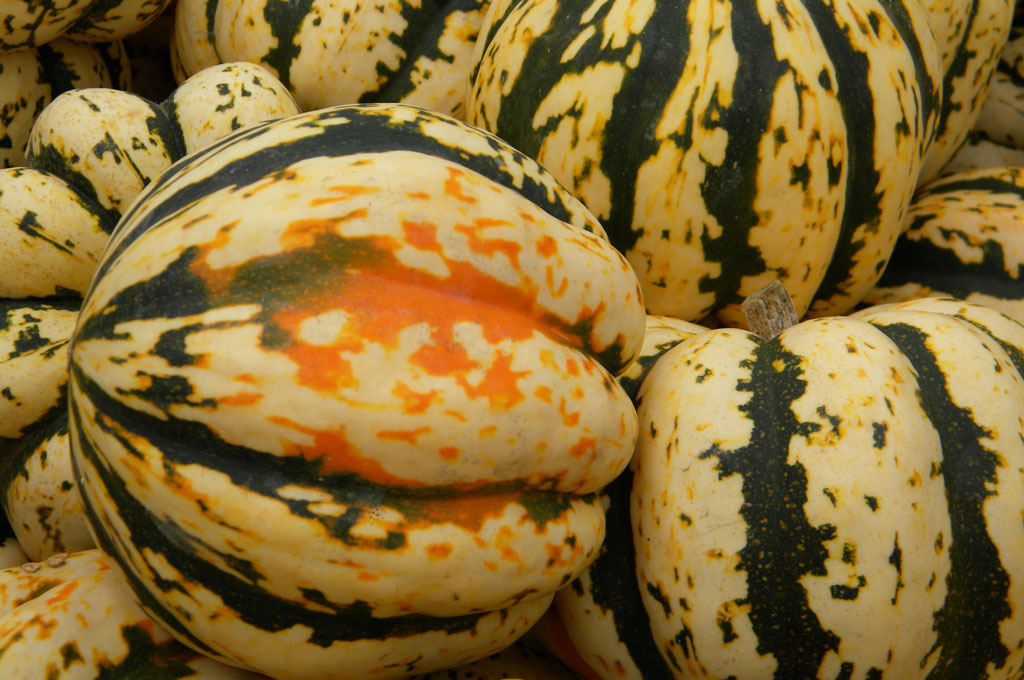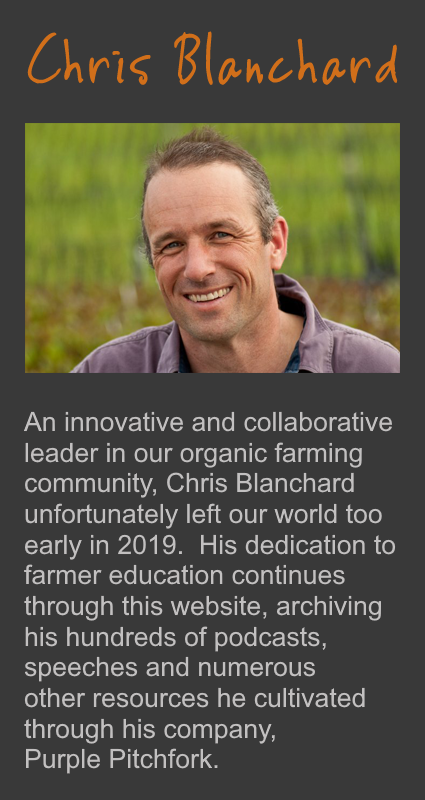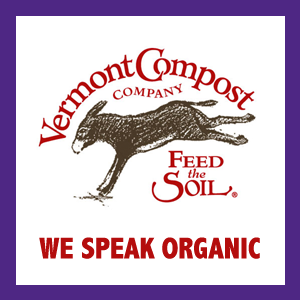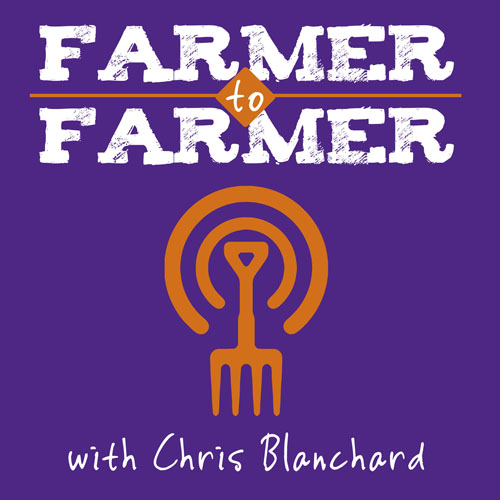The flavor, nutritional value, and keeping qualities of winter squash depend absolutely on the maturity of the fruit at harvest – and that’s not always easy to determine.
At farmer’s market, customers often asked me how to pick a good winter squash, to which I would invariably reply, “At my stand, you can pick any squash and we guarantee it will be sweet. But let me show you how to find a ripe squash in case you want to buy one from somebody else.” We were able to consistently charge up to three times the going rate for winter squash at farmers market by guaranteeing the eating quality of every squash we sold; at wholesale, we were able to push a 20% premium when we applied this to certain specialty varieties – acorn squash, not so much.
Eating quality in squash has two main components: sweetness and texture. Texture is largely controlled by genetics, although high storage temperatures can cause the flesh to become stringy. And while the sugar content has a large genetic component –think sweet corn – it continues to increase as the squash fruits mature. Nutritional content, especially carotenoid levels, also continues to increase while the squash is on the vine.
That’s why you want to leave the squash on the vine until they are fully ripe. Of course, sugar content and nutrition only increase when there is adequate photosynthesis, so disease and insect control to avoid defoliation is a critical component of getting a good squash harvest, even though you may get an acceptable overall yield without full leaf cover.
Good leaf cover also provides protection from a first, light frost. If you can get your squash patch through the first frost and into the Indian summer that often follows, it is possible to gain a couple of weeks of maturation time for your crop. But, in general, plan to get your crop out of the field before the first hard freeze.
Squash pick up a lot of sweetness during the cool nights of autumn. As they grow, most of the sugars plants produce through photosynthesis are combined and stored in the plant as starches and other large polymers. But in response to cold temperatures, so plants – including squash – break down some of this stored energy into “free” sugars such as glucose and fructose, stashing the sweet stuff in their cells to protect against frost damage. Bonus for squash eaters: that free sugar also makes the plants taste sweeter.
As an additional advantage, fully ripe squash store much better than even their slightly under-ripe counterparts.
Harvest Cues
Squash commonly grown in the northern part of the continent come from three species, all in the genus Cucurbita: C. pepo, C. maxima, and C. moschata. Each has its own cues for ripeness.
Because each plant ripens several fruits in succession, starting with the fruit closest to the central stem, entire fields of squash are never ripe at the same time. Harvesting consistently great squash means you have to leave some in the field.
Although many sources say that you should test all squash for ripeness by trying to pierce the skin with a fingernail, this is simply unacceptable in a commercial setting – how many customers want to buy a damaged squash?
Cucurbita pepos include the Acorn and Delicata types, as well as pumpkins. All pepos have a hard, angular stem with five sides (the “stem” on a fruit is technically called a peduncle, which is much more fun to say than “stem,” but not universally understood), and tend to produce smaller fruits than other species. Where they touch the ground – or anywhere that light is excluded from the skin – C. pepo fruits develop an orange spot that darkens as the fruit ripens. This spot may be large or small, depending on the fruit’s position, but regardless of the size of the spot it is the color that indicates ripeness – when the color of the spot looks as though the cinnamon has been stirred into the pumpkin pie filling, the squash are ready to harvest.
As an initial cue on pale Delicata-types, we also taught our crew to look for a dark green stem and a mellowing of the fruit color from yellow to an earthier shade before turning the squash over to check for the spot.
Cucurbita maximas, including Buttercups, Kabochas, and Hubbards, are characterized by their large, spongy stem that turns corky as it ripens. As the name indicates, these also tend to be the larger fruited varieties (in fact, the world-record “pumpkins” are actually maximas bred to resemble the traditional jack-o-lantern style squash). The first of the maximas tend to ripen after the first of the pepos. To judge ripeness, look at the amount of the stem that has turned corky – you want to see at least 75% of the stem take on a corky texture before harvest. A larger percentage of corky stem is also acceptable.
C. moschatas, such as the Butternuts and Cheese types, have rambling vines and a hard, angular stem that flares out noticeably where it meets the fruit. Most of these ripen from a greenish-hued fruit to more of a peanut color. The greenness also fades from the stem when the fruits are ripe.
At the outset of each squash season, I liked to walk through the field with the harvest crew sampling raw slices of the various varieties while looking at the harvest cues. It’s easy to taste the difference between marginally ripe fruits and the fruits that will make a customer sit up and take notice.
It’s worth noting that squash plants set flowers starting at the central stem, and continuing out along the vines. Fruits will ripen in this order, as well. If you find a ripe fruit, every fruit closer to the center of the plant is also likely to be ripe.
How to Harvest
To harvest, I like to cut the stem right where it joins the vine. Because we hand-packed our squash into crates and bins, we didn’t have to worry about squash bumping into each other and making gouges with the longer stems. If you’re using a harvest conveyor, you might want to cut the stems shorter, especially for the pepos and moschatas.
It’s important to make the cut square to the stem. For the hard-stemmed varieties, I like a sharp bypass pruners to make the cut. In my experience, long-handled loppers encouraged a stooped posture and were difficult to control precisely, whereas pruners provided a precise cut and encouraged more ergonomic squatting.
Curing is always a source of debate among squash enthusiasts. We settled on not curing our pepos, but going ahead and curing our maximas and moschatas. It certainly does no harm.
Curing is best done at 70 to 80 degrees F in a dry place – conditions that are not uncommon after the first frost in New England and the Upper Midwest. Squash can also be cured in boxes, as long as you ensure adequate air circulation.





 RSS Feed
RSS Feed
